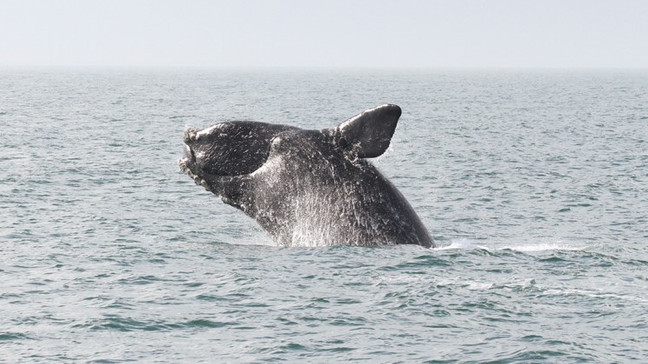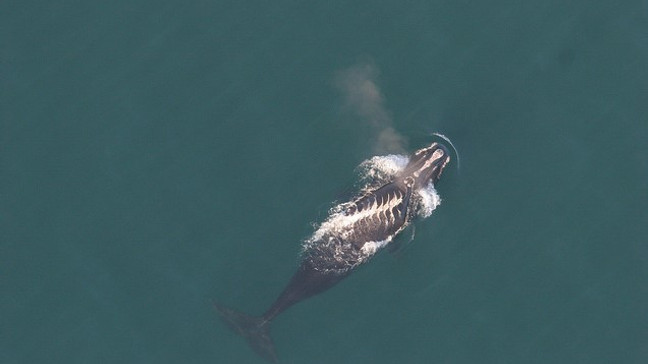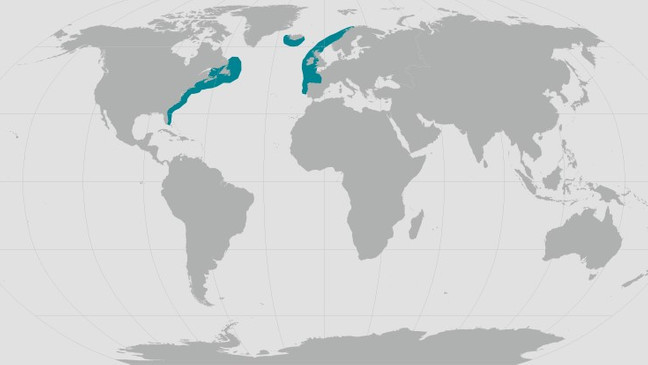Historic $82M funding boost aims to save North Atlantic right whales from extinction
SEATTLE (KOMO) — Endangered North Atlantic right whales have been offered a lifeline with new conservation and recovery efforts.
The Department of Commerce and the National Oceanic and Atmospheric Administration (NOAA) announced $82 million in funding Monday from President Joe Biden's landmark Inflation Reduction Act, representingthe largest climate and conservation investment in history.
The investment ispart of the $2.6 billion framework to invest in coastal resilience that NOAA announced earlier this year, according to the agency.
In a blog post, NOAA saidNorth Atlantic right whales are approaching extinction with fewer than 350 individuals remaining. That number includes fewer than 70 reproductively active females.
GALLERY |Orcas enjoying Elliott Bay in West Seattle
Right whales are baleen whales and feed on copepods, tiny crustaceans, by straining huge volumes of ocean water through their baleen plates, which act like a sieve. The whales can grow to up to140,000 pounds and52 feet in length.
By the early 1890s, commercial whalers had hunted North Atlantic right whales to the brink of extinction, according to the NOAA. The species got its name from being the "right" whales to hunt because the mammals floated when they were killed, making collecting the remains much easier.
The whales no longer face hunting concerns but primary modern threats are entanglements in fishing gear and vessel strikes, the NOAA said. The federal agency said Monday's announcement will providean unprecedented opportunity to address the threats with new technologies and approaches.
Another threat to the species is increasing ocean noise levels from human activities. The NOAA said this is a concern because the noise may interfere with right whale communication and increase their stress levels.
"This historic funding will allow NOAA Fisheries to make critical advancements in our work to save the endangered North Atlantic right whale species,” said U.S. Secretary of Commerce Gina Raimondo.
RELATED |Heaviest animal ever may be this ancient whale found in the Peruvian desert
The NOAA said newfunding will support the application of existing technologies, such as passive acoustic monitoring, andthe development and implementation of technologies to enable vessels to detect and avoid North Atlantic right whales and other large whales.
“The species has experienced a severe population decline that has underscored the urgency to take new and innovative actions for their recovery," said Janet Coit, assistant administrator for NOAA Fisheries. "This funding allows us to invest in technologies to reduce the risk of vessel strikes, increase the use of on-demand fishing gear, and improve enforcement of existing federal regulations.”
There are two other species of right whales. The North Pacific right whale is listed as "endangered" by the International Union for Conservation of Nature and the Southern right whale is listed as "least concern."
“During the past decade, right whales have changed their distribution patterns, spending more time in areas with fewer protections from vessel strikes and entanglements,” said Janet Coit, assistant administrator for NOAA Fisheries.
Each fall, some right whales travel more than 1,000 miles from these feeding grounds to the shallow, according to the NOAA's page on the species. The page also states right whales can probably live for at least 70 years, but data on their average lifespan is limited since scientific monitoring of the species is fairly recent.
The NOAA said it will invest in four major areas over the next three years: monitoring and computer modeling of whale distribution, vessel strike risk reduction, on-demand fishing gear, and enforcement efforts.
RELATED |'Whale ballet': Video shows 3 humpbacks jump in unison, a birthday surprise for man and daughters
In the blog post, the NOAA said it anticipates using funding in this way:
- About $35.8 million for monitoring and modeling, including passive acoustic monitoring, a satellite tagging program, satellite artificial intelligence, and modeling advancements.
- Approximately $20.1 million will be invested toward vessel strike risk reduction efforts, including whale detection and avoidance technology development.
- Around $17.9 million will be invested to support furthering on-demand fishing gear technology.
- About $5 million will be invested in enforcement efforts, supporting new equipment, technologies, and operations.
“With $82 million of Inflation Reduction Act funding, we are making smart investments, a cornerstone of Bidenomics, to help address the crisis these whales are facing through innovative solutions that minimize the impact on workers in marine industries,” said Raimondo.
Right whales are listed as "critically endangered," and the NOAA said the species is declining and experiencing an "unusual mortality event."
RELATED |50+ beached whales dead as frantic workers rush to save 45 more
NOAA Fisheries declared this event in 2017—still ongoing today—following the documentation of elevated right whale mortalities. The event includes 115 North Atlantic right whales that are deceased, seriously injured, or in poor health.




